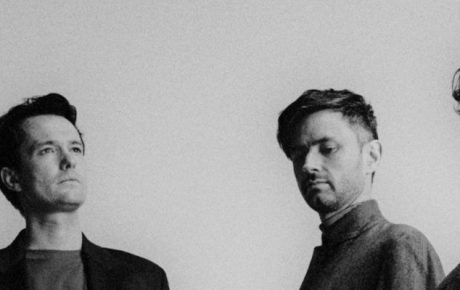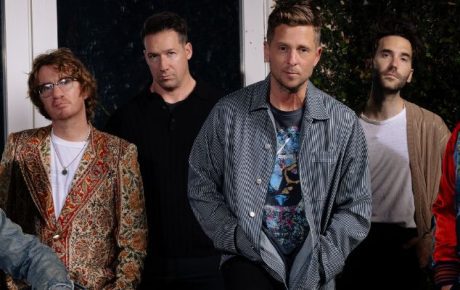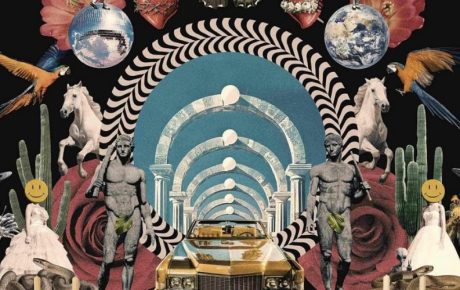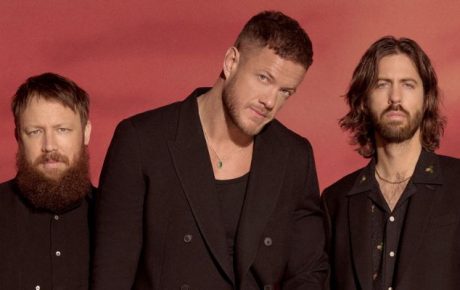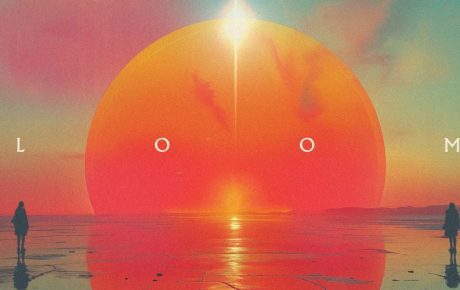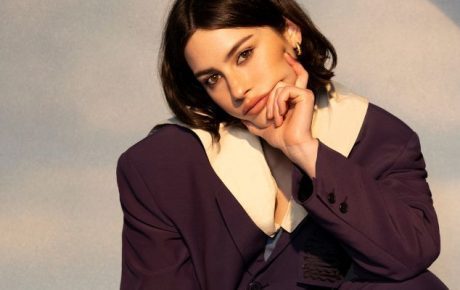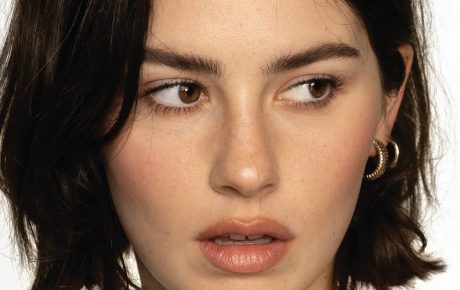The idea of a female pop star has always existed to be some kind of role model; a blueprint of how young girls should dress, act, feel, and grow up to be exactly like. They stay plastered in their era of arrival, like statues in a museum that replicate a certain moment in time. This was how we dressed back then; this was who we idolised. As each new generation of youth flips over like clockwork, what it means to be a female role model changes. Being overly sexualised has turned into owning your sexuality, G-rated love songs have turned into emotional turmoils and political statements are more in vogue than actual fashion.
Since the late 2000s, female pop stars have been changing to please the new teenager and have gone against all traditional norms while doing so. No longer are our idols trying to change us; instead they’re sending the message that we’re more than okay just the way we are. They’re humanising themselves, ditching the cookie-cutter aesthetics for broken, vulnerable beauty and making art out of their struggles. They’re our older sisters, our friends, our leaders; and they’re redefining an entire industry.
We take a look at how some of our favourite artists have deconstructed the female pop star archetype in the new modern era.
Lady Gaga, Lana Del Rey and the 2010s
The 2010s brought about it huge change for the music scene. Not only was there an entirely new generation of teenagers, but they were beginning to familiarise themselves with the new digital world. Artists had to not only change the way they approached and delivered music, but also assess what it meant to be a modern role model. It became clear that the Spice Girls era was now outdated, the last sprinkles of squeaky-clean teen-pop fizzling out with the rise of social media. Teenagers wanted more from their favourite artists; a gripping enough hook that would reel them in before they got bored and found someone else.
In 2008, the world was visibly shook by the entrance of a new pop star. Lady Gaga stepped on the manicured teen-pop neck of the late 90s/early 2000s (in her monster inch heels, obviously) and elevated the idea of pop culture to a Bowie-esque level. Bringing back 80s synth-pop and EDM, and rocking extreme artistic get-ups, Gaga stood to be a new form of anything. The world hadn’t ever seen anything like her before, and as she grew in popularity, she only crafted her eccentric brand more.
As a pop star, Gaga certainly didn’t fit into any pre-made mold; but she definitely still had an idea attached to her that wrapped itself around her natural persona. But the difference between her idea and previous pop ideas was that Gaga’s was inexplicably her own. In order to feel truly in control of her own career and aesthetic, Gaga would continuously take one element of her brand too far in order to cement her authority. If she was told to be sexier, she’d literally turn herself into a piece of meat, if she was told to be more feminine, she’d toy with the idea of gender fluidity and unpack what the word ‘feminine’ actually means. For young, impressionable teens, someone with a blatant IDGAF attitude like Gaga’s was spectacularly refreshing. If Lady Gaga can do this, then so can I. She became a voice for the unheard; minorities (especially the LGBTQ community) who felt ignored and misfits who thought they didn’t belong. Everybody was accepted under Gaga’s reign, and they were accepted for exactly who they were.
On the opposite end of the spectrum, Lana Del Rey was building her own empire as a fierce pop feminist. Wrapping up the entirety of 2012 internet aesthetics (how many times did you reblog a Lana lyric on Tumblr?), Del Rey created a film that echoed Lolita but made it a little more designed for teens. Instead of crushing on the cute boy in class, Del Rey focused her love songs towards older men and toxic relationships. She was perfectly candid about her own life and struggles, turning it all into a beautiful picture to admire and become envious over.
The edge to Del Rey was her melancholy. Between her sombre and sultry voice to each song, intentionally or not, displaying a sense of yearning, Del Rey made a fantasy from an idealised sadness. And that seemed to really resonate with teen girls. She spoke for a digital generation that romanticised every aspect of life, ones that certainly hadn’t grown up during the 60s (the aesthetic Del Rey always drew to) but had seen vintage photographs and a few Marilyn Monroe films via the internet. Going against the norm, Del Rey showed that it was okay for girls to feel sad; and it was okay to be open and honest about that sadness. She held a sense of depth that went further than the typical pop star, finding beauty in broken pieces and going against the mainstream to create pure art.
Billie Eilish, Halsey and the present
As the digital age grew, so did the need to have a role model that could adapt. Thanks to the female powerhouses from the years before, it was acceptable for a female pop star to be whoever she wanted (and it was way more desired by the masses). With access to every bit of information in the world, Gen Zers needed a role model that not only made enjoyable pop but also stood for all the same things they believed in. Issues couldn’t be ignored but instead should be vocalised by those with the platform to do so; and fans needed to know exactly who made up the bones of their idealised persona. There was no longer an elite vs the ignoble, instead the pop stars were figuring out how to live among everyone else.
The allure of Billie Eilish is that while she blatantly disregards every female pop star stereotype, she still does exactly what a female pop star does: inspire teenage girls. And she just might be the most inspirational artist of the modern age. At only 18 years old, Eilish is so far away from previous pop blueprints (she thought the Spice Girls were just actors playing a made-up group in the film Spice World) that she may as well have invented the whole idea of being a female pop star on her own. She represents an entirely new generation, one that’s never been more than one metre from a smartphone and are more connected to the world than anyone could imagine.
Replicating a sadcore sound similar to Del Rey, Eilish touches on usually-too-sensitive topics (especially for teenage girls) such as suicide, depression, horror fantasy worlds and even the point of views of psychopathic murderers (‘Bellyache’). She goes against everything that female pop stars are traditionally supposed to be. She drowns herself in baggy clothes, hiding her body from the world and creating fashion statements with lime green hair and claw-like nails. She doesn’t at all sound like the way she looks, her soft and heavenly voice a stark contrast from her basketball shorts and hoodies, and that’s exactly the way she likes it. Eilish continuously challenges what it means to be a girl in the modern world. While she acknowledges that nothing is wrong with the ‘girly girls,’ she’s opening up the idea that not every young female sees themselves in that aesthetic. And as the new wave of teens learn the ways they’re different from others, Eilish shines over them like a beacon of hope and celebrates their individuality.
Coming out of the Tumblr age in 2015, Halsey created a brand right from the start that spoke to the girls she was targeting. She immersed herself into the world they desired, making a movie out of their hopes and dreams and putting a rose tint over life’s struggles. She had a unique sound, an indie synth-pop haze that wrapped itself around beautiful poetry, and she made it clear she was an artist in every form of the word. Halsey created themes for her albums; different worlds that transported listeners into a fantasy. She was candid about her mental health, her toxic relationships, her bisexuality. She was so human, right from the start, that it sometimes didn’t feel like she was a pop star at all.
As Halsey’s popularity grew, so did her advocacy. She never backs down from a fight, whether it’s LGBTQ rights and representation in the media, racism, women empowerment or mental illness, Halsey uses her growing platform to shed a light on all of it. She’ll sing about her relationships with both women and men in the same song, depict honest female relationships in her music videos, and even put out a record that stands to be an entire metaphor for bipolar disorder. And it goes beyond the music too. In between protests and rallies (and setting up her own funds and organisations), Halsey uses interviews and even her fashion to make necessary statements. In a world so connected, Halsey makes sure her fans never turn a blind eye to what really matters. And it’s becoming more and more clear that this is the new kind of female pop star we all need.

